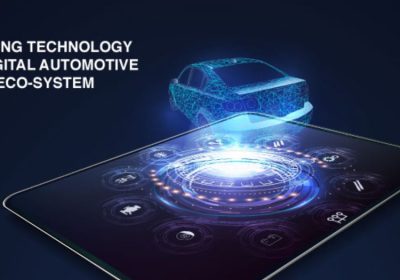
How Customer Service is Evolving in 2024?
Brands are continuously competing for consumer attention in the midst of abundant information, and automation has become essential for optimizing marketing procedures. As per a recent study by Social Media Today, around 75 percent of marketing teams employ automation tools in their everyday tasks. Yet, while automation promises unmatched efficiency and scalability, it also raises worries about the decline of personalized brand communication.
The survey also highlights that 61 percent of marketers express apprehension about the potential decline in personalization due to automation. Similarly, a global study by PWC underscores that consumers are increasingly seeking personalized engagements with brands, indicating a yearning for human connection in an ever more digital environment. Therefore, striking a balance between automation and personalization is crucial for brands to adapt to the evolving needs of both businesses and consumers.
Advances in technology, particularly in AI and machine learning, offer marketers numerous automation opportunities, saving time and money while enhancing efficiency.
The question isn’t whether marketers need automation anymore; it’s how much automation is necessary. While excessive automation can compromise personalization, leveraging data analytics can provide transformative insights without sacrificing individualized experiences.
Maintaining personalization amidst automation is essential for customer engagement and loyalty. While automation streamlines processes, human interaction remains invaluable. Balancing automation with personalized touches enhances customer satisfaction and brand loyalty, ensuring marketing success.
Content: Value and Timing
When aiming to deliver valuable and timely content, email campaigns serve as a cost-effective method to leverage automation and personalization simultaneously. However, inundating customers’ inboxes with excessive content can be counterproductive. Instead, focusing on providing relevant content without intruding on privacy is paramount. Utilizing transactional data for automated and personalized communications can offer a more natural and meaningful interaction, thereby fostering stronger brand-customer relationships.
Customer Privacy
Ensuring the privacy of customers is a pivotal element of personalized marketing. Studies reveal that 81 percent of consumers want brands to grasp their preferences without compromising their privacy. Marketers need to navigate cautiously to prevent overstepping the delicate balance between tailored communication and invasive data methods. Excessive personalization or improper handling of consumer data may distance customers and diminish brand credibility, highlighting the significance of honoring privacy limits.
Customer Experience
In enhancing customer experience, technology should complement rather than replace human interaction. A notable example is Sainsbury’s innovative campaign “This time It’s Ultra Personalized,” wherein the grocery chain leveraged customers’ smartphone data to offer personalized in-store offers. By seamlessly integrating technology to enhance the in-store experience, Sainsbury’s exemplified how automation can augment rather than detract from human touchpoints, thereby enriching customer experiences.
Automation + Personalization
The synergy between automation and personalization presents numerous opportunities for marketers to engage with their audience effectively. Strategies such as incorporating personalized elements in automated communications or encouraging human interactions alongside automated processes can strike a harmonious balance. However, achieving this equilibrium requires a nuanced approach to avoid the pitfalls of excessive automation or intrusive personalization.
Strategies for Balancing Automation and Personalization
Automation and personalization are crucial aspects of modern marketing, yet finding the right equilibrium between them is a challenge for brands today. Here are 9 strategies to strike that balance effectively:
1. Tailor Personalization to Your Audience
– Customize personalization levels based on audience preferences and characteristics.
– Define user personas early on to guide personalization efforts.
2. Segment Your Audience
– Divide your audience into segments based on shared characteristics for more targeted campaigns.
3. Create Progressive Campaign Journeys
– Design automated workflows that evolve based on user interactions, enhancing personalization throughout the customer journey.
By implementing these strategies, brands can navigate the delicate balance between automation and personalization, maximizing both efficiency and consumer connection in their marketing efforts.
4. Automate Processes, Personalize Content
– Utilize automation for campaign execution while keeping the content personalized for audience engagement.
5. Maintain Optimal Frequency
– Avoid overwhelming audiences with excessive marketing by aligning automation frequency with manual campaigns.
6. Determine Personalization Targets
– Identify areas for personalization based on audience needs, leaving other aspects to automation.
7. Blend Automation with Personal Messaging
– Combine automated processes with personalized interactions to uphold brand value and consumer trust.
8. Utilize Automation Insights
– Leverage analytics from automation tools to refine personalization strategies and campaign effectiveness.
9. Employ Technology for Mimicked Personalization
– Use automation tools capable of mimicking personalization, such as chatbots extracting user data for tailored interactions.
Examples of Good Customer Service
Excellent customer service involves practices aimed at exceeding customers’ needs and expectations, ensuring a positive experience. Let’s delve into examples of good customer service from leading brands:
1. Prompt Responsiveness
Amazon sets a prime example with its quick responses to inquiries and efficient issue resolution for millions worldwide.
2. Personalization
Netflix tailors content recommendations based on individual preferences, enhancing satisfaction and loyalty.
3. Empathy
Airbnb’s “Open Homes” program provides free housing during crises, showcasing empathy and strengthening relationships.
4. Clear Communication
Verizon offers detailed service information through various channels, ensuring clarity for customers.
5. Problem-Solving Skills
Apple’s Genius Bar offers expert support, demonstrating effective issue resolution and product knowledge.
6. Product Knowledge
LEGO store employees undergo extensive training to provide expert guidance and recommendations to customers.
7. Consistency
Starbucks maintains uniform quality and service across all locations worldwide, ensuring a consistent experience.
8. Patience
Zappos’ representatives patiently assist customers, ensuring needs are met and fostering loyalty.
9. Positive Attitude
Southwest Airlines’ friendly and upbeat service creates a welcoming experience for travelers, fostering loyalty.
10. Follow-up
Hilton Hotels & Resorts proactively follows up with guests post-stay, demonstrating a commitment to satisfaction and feedback gathering.
Final Thoughts
Navigating the dynamic marketing landscape necessitates finding a fine equilibrium between automation and personalization. While automation promises efficiency and scalability, it’s imperative to uphold personalized communication to meet the rising consumer demand for meaningful interactions with brands. As shown by various studies, extensive automation can compromise personalization, raising concerns about customer satisfaction and loyalty.
Nevertheless, with effective strategies, brands can seamlessly integrate automation and personalization. This involves customizing personalization based on audience preferences, segmenting the audience, and intertwining automation with personalized messaging to elevate customer experiences while optimizing operational efficiency.
Furthermore, respecting customer privacy and leveraging technology to complement human interaction are crucial elements in striking this balance. Brands should strive to deliver valuable content in a timely manner without inundating consumers, respecting their preferences and privacy boundaries.
In essence, by adopting a nuanced approach that judiciously incorporates automation when suitable while maintaining personalization throughout the customer journey, brands can attain marketing success. Achieving the equilibrium between automation and personalization isn’t just a destination but an ongoing journey where brands must continually adapt and evolve to meet the evolving needs of both businesses and consumers.






